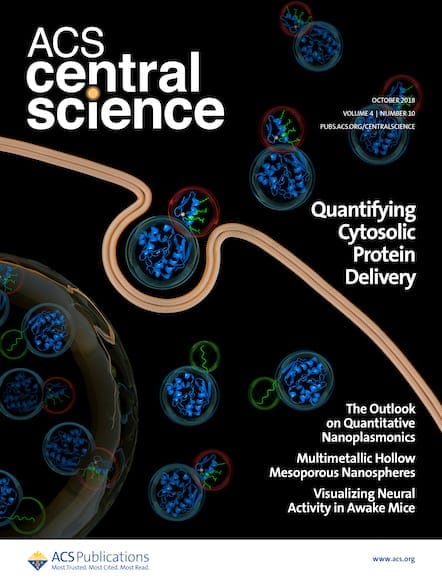What motivates this year’s National Academy of Sciences awardee — a busy professor at Stanford University with a full plate — to assume the role as Editor-in-Chief of ACS Central Science, a new open access journal ready to compete with top science journals? The answer lies in what drives Carolyn Bertozzi. Her brief bio on Twitter […]

Her brief bio on Twitter points to her focused philosophy: “Chemistry is central to everything, especially human health.” She notes that many important developments such as antibiotics, vaccines, water treatment and lithium batteries were driven by chemistry and the next generation of developments will rely on chemical insights. Yet few chemists become household names and often the public doesn’t fully understanding what chemists do around the globe or the value chemists bring. Driven by a passion for explaining the role of chemistry in daily life, Bertozzi says she leapt at the opportunity to become Editor-in-Chief of ACS Central Science, seeing a chance to greatly increase chemistry’s visibility.
Teamwork is essential, Bertozzi says, as she looks to attract interdisciplinary researchers from an array of fields. Like other editors and scientists today, Bertozzi boasts a wealth of knowledge in one subject area coupled with “superficial expertise” in other sectors “My deep expertise lies in chemical biology as applied to carbohydrates. When it comes to physical chemistry or inorganic chemistry,” she says it makes the most sense to rely on subject specific experts — fellow Editors or one of the almost 70 members of the editorial advisory board. Together with the editorial board who are all leaders in their own fields, Bertozzi feels confident the journal is identifying, recruiting, and championing the best science happening today around the globe.
With competition for clicks and eyeballs increasing every day, engaging readers is key to success. Bertozzi joined Twitter last year and is active on the social networking site, promoting articles from the journal and interacting with readers and authors. Social media allows her to share anecdotes and advice with teachers, politicians, and students and to connect with fellow scientists. Several ideas for editorial commentary featured in the journal came from conversations initiated over Twitter.
Finding innovative ways to tell stories is also important, Bertozzi says. Stories with unusual angles, such as a recent feature on the consumption of synthetic meat, can be an opportunity to attract people who aren’t normally interested in scientific developments. “We wrote this article because we thought people would be entertained by it because it is kind of funny to think of synthetic meat, it is like the next veggie burger,” she said.
Finally, Carolyn Bertozzi sees community engagement as vital. She seeks genuine feedback, through all available means – from social media to the journal editorial team’s outreach, and informal channels including conferences. Her goal is to develop an ongoing feedback loop to continuously drive chemistry to solve challenges around the world. She and her team are gratified to hear the stories and research that are already making a difference in the community. And hearing peoples’ comments only makes the journal better.
